The night sky has always fascinated and intrigued humanity, leading to the creation of fascinating mythological stories associated with the zodiac constellations. These celestial formations have captured our imagination for centuries, serving as a basis for astrology and inspiring countless tales. Each zodiac constellation holds its own unique story, entwining gods, heroes, and mystical creatures. From the tale of the Ram’s Golden Fleece in Aries to the captivating myth of Aphrodite and Eros in Pisces, these stories offer a glimpse into the rich tapestry of human imagination and our eternal fascination with the stars. Join us as we delve into the mythical journeys and legends that have become entwined with the zodiac constellations, unveiling the captivating stories that have been passed down through generations.
Story of Aries
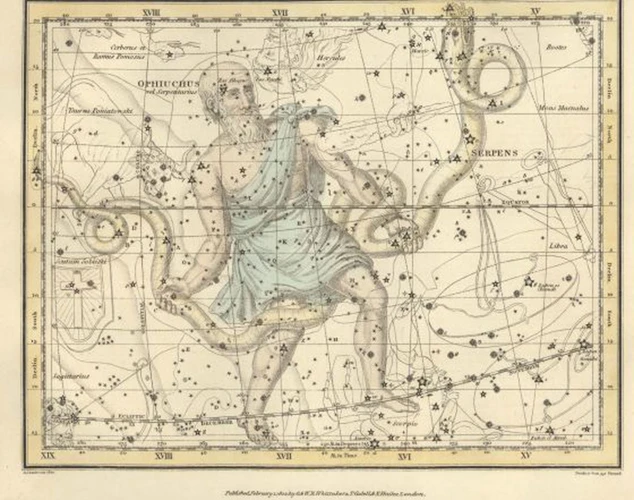
In the vast expanse of the cosmos, the story of Aries, the first sign of the zodiac, traces its origins back to ancient cultures and civilizations. The constellation of Aries, representing the Ram, holds a special place in Greek mythology. Aries is said to be the embodiment of the Golden Fleece, a mythical object of desire that sparked a grand adventure for Jason and the Argonauts. This tale, intricately intertwined with the zodiac, tells of a quest to retrieve the Golden Fleece, which had been guarded by a fierce dragon. Through cunning and bravery, Jason triumphed, acquiring the fabled fleece and bringing prosperity to his homeland. This myth demonstrates not only the courage and determination of Aries, but also the enduring allure of ancient stories that have shaped our understanding of the cosmos and its influence on our lives. To explore more mythological connections to the zodiac constellations, venture further into the rich tapestry of various cultures and their captivating narratives that have stood the test of time.
Origin of Aries
The origin of Aries, one of the twelve zodiac constellations, can be traced back to ancient Greek mythology. According to the legend, Aries represents the Golden Ram that played a significant role in the story of Jason and the Argonauts. The ram was sent by the goddess Nephele to rescue her children, Phrixus and Helle, from their wicked stepmother. The ram possessed a shimmering golden fleece, which was believed to have magical properties and brought prosperity to its owner. As Phrixus and Helle mounted the ram, it soared through the sky, crossing vast lands and tumultuous waters. However, during their journey, Helle lost her grip and fell into the sea. In honor of the ram’s heroic act, Phrixus sacrificed it to Zeus and hung its golden fleece in a sacred grove. This extraordinary tale not only explains the celestial representation of Aries, but it also symbolizes courage, sacrifice, and the rewards that come from embarking on daring adventures. To uncover more intriguing secrets and stories behind other zodiac constellations, delve into the fascinating world of astrology and astronomy, and explore the hidden mysteries that reside within the depths of the night sky.
The Ram’s Golden Fleece
In the realm of Greek mythology, the story of the Ram’s Golden Fleece holds a prominent place. This captivating tale begins with King Athamas and his second wife, Ino, who grew jealous of his son, Phrixus, and plotted to have him killed. To save his life, Hermes sent a winged ram with a golden fleece to rescue Phrixus. The ram carried Phrixus across the sea, but as they flew, Phrixus dropped a golden lock of the ram’s fleece into the water, giving rise to the name Golden Fleece. The ram safely delivered Phrixus to Colchis, where King Aeëtes welcomed him and the Golden Fleece. In gratitude, Phrixus sacrificed the ram to Zeus and presented the fleece to King Aeëtes.
The Golden Fleece soon became a testament of power and prosperity. Jason, the son of King Aeson, caught wind of the legendary fleece and saw its potential to restore his father’s throne. He gathered a group of brave heroes known as the Argonauts and embarked on a perilous journey to retrieve the fleece.
Jason and his crew faced numerous challenges during their quest. They encountered the clashing rocks, the Symplegades, which threatened to crush their ship. However, with the help of the goddess Athena, they managed to navigate through the treacherous passage unscathed.
Upon their arrival in Colchis, King Aeëtes set forth a series of impossible tasks for Jason to complete before he could obtain the Golden Fleece. With the guidance of the sorceress Medea, daughter of King Aeëtes, Jason succeeded in overcoming these obstacles, thanks to her magical powers.
In a climactic moment, Jason unleashed the fire-breathing bronze bulls, plowed a field, and sowed its furrows with dragon’s teeth. From the teeth sprung fully armed warriors, the Spartoi, but with the help of Medea’s enchantments, Jason thwarted their aggression.
Next, Jason faced the sleepless dragon that guarded the Golden Fleece. As the dragon slumbered, Jason stealthily retrieved the precious fleece and, together with Medea, made their daring escape back to Greece.
The tale of the Ram’s Golden Fleece symbolizes the bravery, cunning, and quest for greatness that remains deeply embedded in the zodiac constellation of Aries. It represents the triumph over adversity and the rewards that come from determination and resourcefulness. To explore more about the zodiac constellations and their significance, you can read about the distinctions between astrology and astronomy.
Story of Taurus
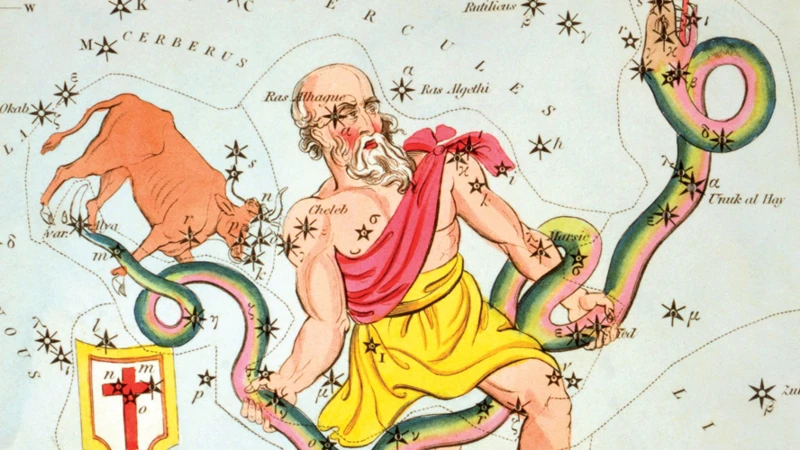
One of the most captivating stories associated with the Taurus constellation takes us back to ancient Greek mythology. In this myth, Zeus, the king of the gods, takes on the form of a majestic bull to abduct Europa, a mortal woman of extraordinary beauty. Taurus, the Bull, symbolizes this transformative moment as Zeus carries Europa across the sea to the island of Crete. This story showcases both the power and allure of Taurus, as well as the whims of the gods who intervened in the lives of mortals. The tale of Zeus and Europa serves as a reminder of the profound impact that celestial bodies and their mythological connections have had on human cultures. To further explore the intricate relationship between astrology and astronomy, and the wonders of the zodiac constellations, delve into the fascinating stories and beliefs that unravel the secrets of our universe.
The Abduction of Europa by Zeus in Bull Form
In the realm of Greek mythology, the mythological story surrounding the abduction of Europa by Zeus in bull form holds a prominent place. It is a tale of divine allure and forbidden love. Europa, a mortal princess renowned for her unparalleled beauty, caught the attention of Zeus, the king of the gods. Filled with desire, Zeus transformed himself into a gentle white bull and approached Europa as she played by the seashore. Enamored by the bull’s majestic appearance, Europa approached and eventually climbed onto its back.
Unbeknownst to Europa, Zeus, in his cunning disguise, swiftly carried her away across the sea to the island of Crete. There, he revealed his true form and declared his love for her. Europa, captivated by Zeus’ divine presence and charm, became the queen of Crete. This union between a mortal and a god resulted in the birth of several influential figures in Greek mythology.
The story of the abduction of Europa by Zeus in bull form serves as a symbol of divine intervention and the allure of the unknown. It explores themes of forbidden love, the power of transformation, and the consequences of interacting with the gods. This myth allows us to delve into the complex relationship between mortals and the divine, highlighting the interplay between mortal desires and the whims of the gods. The tale of Europa’s abduction showcases the captivating and often unpredictable nature of Greek mythology, captivating the imaginations of generations to come.
Story of Gemini
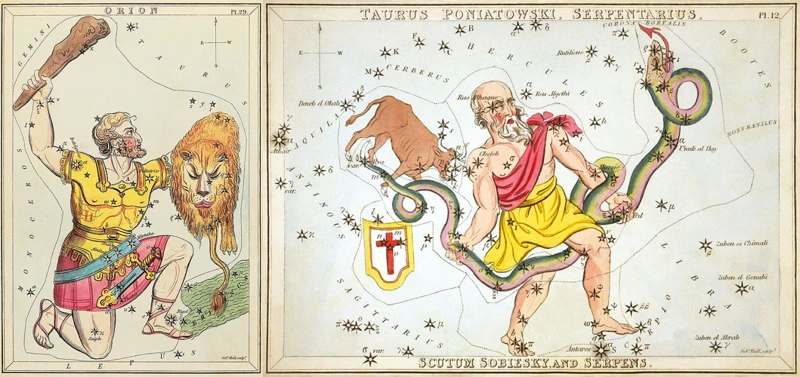
Gemini, the celestial twins, holds a captivating story rooted in Greek mythology. The tale of Castor and Pollux, the divine twins, defines the essence of the Gemini constellation. Castor and Pollux were born from different fathers; Castor was mortal and Pollux was immortal. These inseparable brothers, renowned for their exceptional bravery and skill in battle, embarked on numerous adventures together. In one legendary saga, they joined Jason and the Argonauts in their quest for the Golden Fleece. Castor was ultimately mortally wounded, and Pollux, devastated by the loss of his brother, pleaded with Zeus to allow them to remain together even in death. Zeus granted their wish and transformed them into the constellation of Gemini, where they would forever shine side by side in the night sky, a symbol of eternal brotherly love and companionship. This poignant tale of the divine twins reminds us of the enduring bonds of kinship and the power of unity.
The Tale of the Divine Twins: Castor and Pollux
In the realm of Greek mythology, the constellation of Gemini holds a captivating story known as “The Tale of the Divine Twins: Castor and Pollux.” These twins, born to different fathers, showcase the duality and complexity of human existence. Castor was the son of King Tyndareus, while Pollux was the son of Zeus. Despite their different lineages, the bond between the brothers was unbreakable. Castor was renowned for his exceptional equestrian skills, while Pollux was a skilled boxer.
Their extraordinary bond was put to the ultimate test when Castor was mortally wounded during a battle. Devastated by his brother’s impending death, Pollux prayed to Zeus, begging him to let them remain together forever. Touched by Pollux’s devotion, Zeus granted their wish and immortalized them as the constellation of Gemini, represented by two stars shining brightly side by side.
Castor and Pollux became revered as the protectors of sailors, known for their ability to calm stormy seas and guide ships to safety. Sailors would often look up to the stars of Gemini for guidance during their perilous journeys.
The tale of Castor and Pollux illustrates the eternal bond and loyalty between siblings, as well as their transformation into a celestial symbol of protection and guidance. It reminds us of the power of love, sacrifice, and the enduring presence of these mythological stories in shaping our understanding of the zodiac constellations and their significance in human culture throughout history.
Story of Cancer
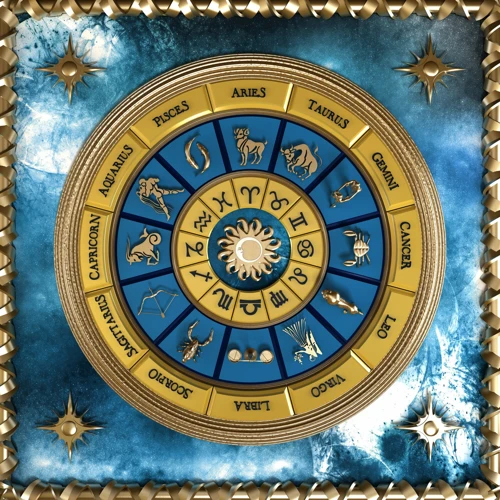
Nestled among the zodiac constellations, Cancer, the fourth sign, is associated with a tale that intertwines with the trials of the mighty Hercules. In Greek mythology, the story of Cancer is intricately linked to one of the Twelve Labors of Hercules. Tasked with a seemingly impossible challenge, Hercules was commanded to capture the Zodiakian Crab. This seemingly insignificant creature, sent by the goddess Hera to thwart Hercules’ efforts, proved to be more formidable than anticipated. The crab, with its resilient shell, proved to be a formidable opponent as it clung fiercely to the hero’s foot, attempting to distract him from his mission. Ultimately, Hercules prevailed by crushing the crab underfoot, forever marking Cancer as an emblem of resilience and the embodiment of an episode of great heroism. This captivating story serves as a reminder that sometimes even the smallest challenges can test our mettle and remind us of the strength that resides within.
Hercules and the Twelve Labors: The Capture of the Zodiakian Crab
In the grand tale of Hercules and his Twelve Labors, one of his incredible feats was the capture of the Zodiakian Crab, which is associated with the constellation Cancer. As part of his punishment for committing a terrible crime in a fit of madness, Hercules was tasked with completing a series of seemingly impossible tasks. The capture of the Zodiakian Crab was one such labor that he had to overcome. The story goes that Hercules was battling the fearsome Hydra, a multi-headed serpent-like creature, when the cunning goddess Hera, who despised Hercules, sent the Zodiakian Crab to distract him. With its tenacious grip, the Crab clamped onto Hercules’ foot, attempting to impede his progress. But Hercules, fueled by sheer strength and determination, swiftly crushed the Crab under his mighty heel, effectively subduing the creature and continuing his battle against the Hydra. This labor symbolizes the resilience and determination required to overcome obstacles, showcasing Hercules’ unwavering resolve even in the face of unexpected challenges. Through his triumph over the Zodiakian Crab, Hercules proved his mettle as a hero and exemplified the indomitable spirit that he was known for throughout his legendary exploits.
Story of Leo
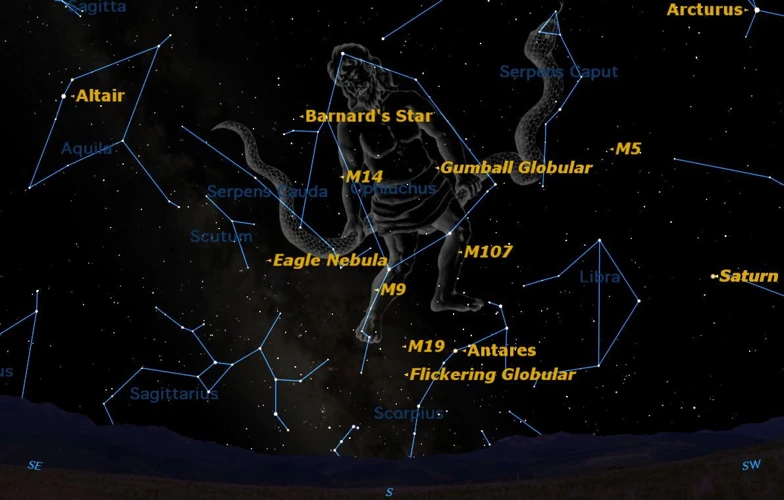
In the realm of the zodiac, Leo, the majestic Lion, holds a prominent position, both in the night sky and in mythology. One of the most famous tales associated with this radiant constellation is the Nemean Lion, the first of the Twelve Labors of Hercules. This formidable beast was said to possess a hide that no weapon could penetrate, rendering it invulnerable to physical harm. Hercules, renowned for his strength and bravery, took on the daunting task of slaying the Nemean Lion as part of his heroic trials. Armed only with his bare hands, he strangled the lion and triumphed over its ferocious might. This mythological story of Leo speaks to the indomitable spirit and courage that the constellation represents. It reminds us that even in the face of seemingly insurmountable challenges, we can tap into our inner strength and overcome obstacles with unwavering determination. The story of Hercules and the Nemean Lion is but one captivating thread woven into the timeless tapestry of zodiac mythology, showcasing the enduring power of these celestial tales.
The Nemean Lion: The First of Hercules’ Twelve Labors
In the mythological tale of “The Nemean Lion: The First of Hercules’ Twelve Labors,” the hero Hercules was tasked with overcoming a seemingly insurmountable challenge. The Nemean Lion was a monstrous beast with impenetrable golden fur and immense strength, causing havoc and terrorizing the countryside. Hercules, fueled by his extraordinary courage and legendary strength, set out to defeat the lion and begin his series of remarkable labors. The confrontation with the Nemean Lion was no ordinary battle. Regular weapons proved useless against the lion’s impenetrable hide, leaving Hercules to devise a different strategy. With his bare hands, Hercules grappled with the powerful beast, finally managing to overpower and strangle it to death. The victorious Hercules then proudly wore the lion’s impenetrable golden skin as a symbol of his prowess and strength. The story of the Nemean Lion illustrates the bravery and determination of Hercules as he embarked on his challenging quests, setting the stage for the subsequent labors that earned him his status as one of the greatest heroes in Greek mythology.
Story of Virgo
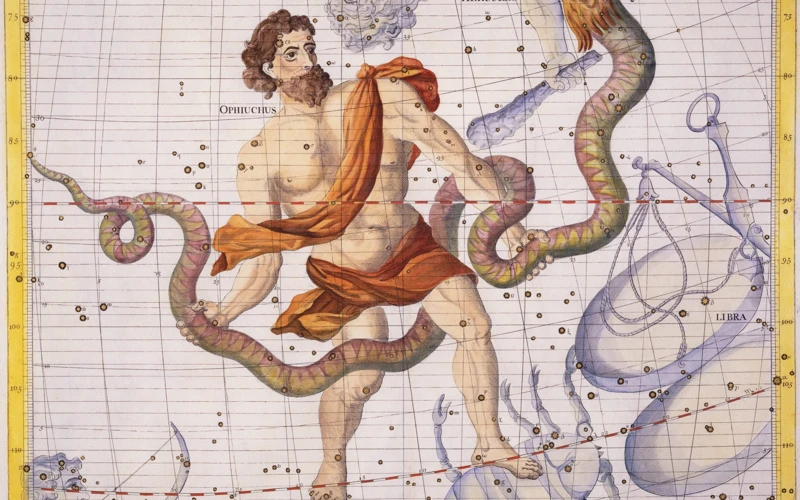
The story of Virgo, the sixth sign of the zodiac, intertwines with Greek mythology and the tale of the goddess of harvest, Demeter. Virgo’s constellation represents the maiden, often identified as Demeter’s daughter, Persephone. The myth tells of Persephone’s abduction by Hades, the god of the underworld. In her grief and anger, Demeter went on a search and a deep depression gripped the world. Famine and bleakness spread across the lands. Eventually, a compromise was reached, where Persephone spent part of the year with her mother and the other part in the underworld with Hades. This myth illustrates the cyclical nature of the seasons, with Virgo symbolizing the harvest time, abundance, and the nurturing aspect of the earth. It serves as a reminder of the eternal cycle of life, growth, and the importance of balance and interconnectedness. The story of Virgo offers a glimpse into the rich mythological tapestry that surrounds the zodiac constellations, highlighting the enduring power of ancient narratives in shaping our understanding of the celestial world.
The Goddess of Harvest: Demeter and the Story of Persephone
In Greek mythology, Demeter, the Goddess of Harvest, plays a central role in the story of her daughter Persephone. Persephone, known for her beauty, caught the attention of Hades, the God of the Underworld. One day, while Persephone was gathering flowers in a field, Hades emerged from the depths of the earth in his chariot and abducted her, taking her to the Underworld against her will. Demeter, grief-stricken by the disappearance of her daughter, searched tirelessly for her, neglecting her duties as the goddess of agriculture. The earth grew barren and crops withered, as Demeter’s sorrow affected the fertility of the land. Seeing the devastation unfold, the other gods intervened and demanded that Hades release Persephone. However, there was a catch. Persephone had eaten six pomegranate seeds, binding her to the underworld for six months of the year. Eventually, a compromise was reached, and it was decided that Persephone would spend six months with Hades in the Underworld, representing the winter months when the earth lies dormant, and the other six months with Demeter, symbolizing the return of spring and the revival of plants and crops. This tale of loss, resilience, and the cyclical nature of the seasons portrays the powerful connection between the goddess of harvest, Demeter, and her daughter Persephone, reminding us of the delicate balance between life and death, growth and decay.
Story of Libra
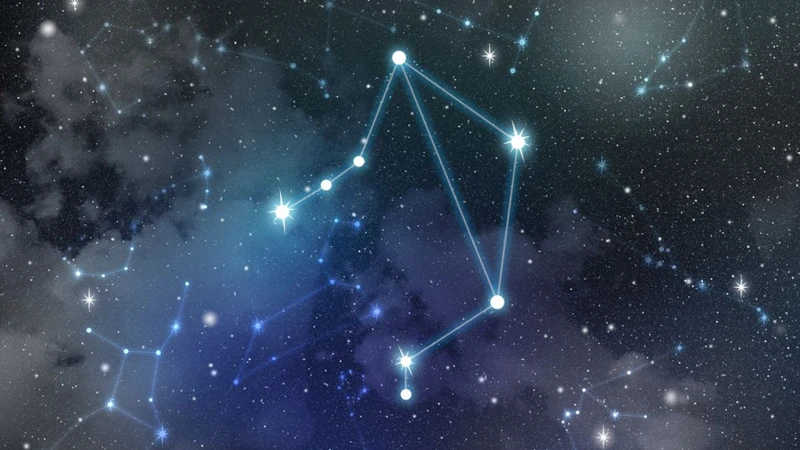
The story of Libra, the seventh sign of the zodiac, unveils the timeless concept of justice and balance. In Greek mythology, the tale of Astraea and the Golden Age is intricately linked to the symbolism of Libra. Astraea, the goddess of justice, was the last immortal to leave Earth during the transition from the Golden Age to the subsequent ages of mankind. The Golden Age marked a period of peace, prosperity, and harmony, where humanity coexisted in perfect equilibrium. However, as humans became more flawed and corrupted, the Golden Age came to an end, and Astraea ascended to the heavens, finding her rightful place among the stars as the constellation of Libra. This myth reminds us of the intrinsic human desire for justice and the eternal pursuit of balance in our lives and societies. To delve deeper into the fascinating connections between astrology and mythology, explore the stories interwoven with each of the zodiac constellations and unravel the mysteries that continue to captivate our imagination.
The Scales of Justice: The Story of Astraea and the Golden Age
In the world of mythology, the story of Astraea and the Golden Age sheds light on the origins of the Libra constellation and its symbolism of justice, balance, and harmony. Astraea, the Greek goddess of justice, is often depicted holding scales, representing the importance of balance in the moral order. According to the myth, Astraea lived during the Golden Age, a time of prosperity and peace on Earth. The Golden Age was characterized by a harmonious coexistence between humans and gods, where justice prevailed and crime was nonexistent.
As time passed, humanity’s behavior deteriorated, leading to the downfall of the Golden Age. Astraea was deeply saddened by the increasing corruption and injustice plaguing the world. Eventually, she could no longer bear witness to the moral decay and decided to retreat to the heavens, taking her rightful place among the stars.
Legend has it that as Astraea ascended to the celestial realms, she dropped her scales, which transformed into the constellation Libra. This celestial representation serves as a reminder to humankind of the importance of balance, fairness, and the pursuit of justice. Libra, with its symbol of the scales, reflects the eternal quest for equilibrium, guiding individuals towards ethical decision-making and the establishment of harmonious relationships.
The story of Astraea and the Golden Age echoes the timeless yearning for a just society, inspiring us to seek fairness and harmony in our own lives. It reminds us that the pursuit of justice is an ongoing endeavor, requiring constant vigilance and a commitment to maintaining balance in all aspects of our interactions. Let the story of Astraea and the Libra constellation serve as a guiding light, encouraging us to embrace justice and strive for a world where harmony flourishes.
Story of Scorpio
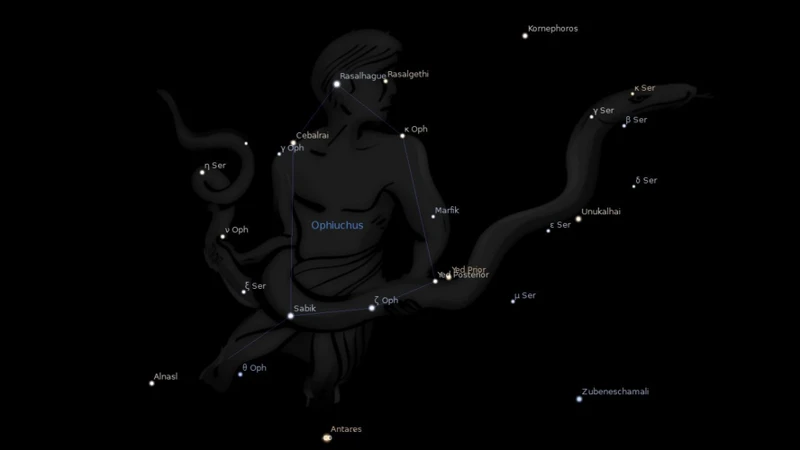
Deep within the celestial realm, the story of Scorpio, with its enigmatic and captivating mythology, unfolds. Scorpio, the eighth sign of the zodiac, is associated with the tale of Orion’s fateful encounter with the Scorpion. In Greek mythology, Orion, a mighty hunter known for his arrogance, boasted that he could slay any creature on Earth. Offended by this arrogance, the goddess Artemis sent a scorpion to challenge Orion. A fierce battle ensued, resulting in the scorpion fatally stinging Orion, and in turn, Orion striking the scorpion down with his mighty club. As a testament to their struggle, both Orion and the Scorpion were immortalized in the night sky as neighboring constellations. This tale reminds us of the consequences of hubris and the fragility of mortal existence, forever preserved in the eternal dance of the stars. Unraveling the secrets of this myth and exploring the profound connections between constellation lore and human culture allows us to appreciate the timeless wonder of the constellations and the stories they whisper across the cosmos.
The Great Hunter: Orion’s Encounter with the Scorpion
In the realm of Greek mythology, the story of “The Great Hunter: Orion’s Encounter with the Scorpion” weaves a tale of celestial proportions. Orion, the mighty hunter, was known for his exceptional skills and towering presence. However, his hubris led him to boast that he could slay any creature on Earth. This arrogant claim reached the ears of the goddess Gaia, who believed in the importance of maintaining balance in nature. To humble Orion and prevent his arrogance from causing chaos, Gaia sent forth a formidable opponent – a giant scorpion.
As night fell, Orion found himself face to face with the enormous creature. The scorpion’s stinger glowed with a venomous intensity, and its chitinous exoskeleton ensured a formidable defense. The battle between these two mighty adversaries began, shaking the heavens themselves. With each strike of his formidable bow, Orion wounded the scorpion, but the creature’s relentless attacks kept him on the defensive.
The celestial spectacle caught the attention of Zeus, the king of the gods, who admired Orion’s bravery and feared the consequences if he were to perish. To immortalize this epic battle, Zeus placed both Orion and the scorpion in the night sky as constellations. Orion took his place amongst the stars as a mighty hunter forever chasing the Pleiades in the Taurus constellation, while the scorpion became Scorpio, a symbol of danger and vigilance.
This mythological tale serves as a reminder of the delicate balance of power in the universe and the consequences of unchecked pride. The celestial dance between Orion and the Scorpion reminds us of the eternal struggle between light and darkness, good and evil. As we gaze up at the night sky, we can marvel at the celestial reminder of this epic encounter and the enduring power of myth.
Story of Sagittarius
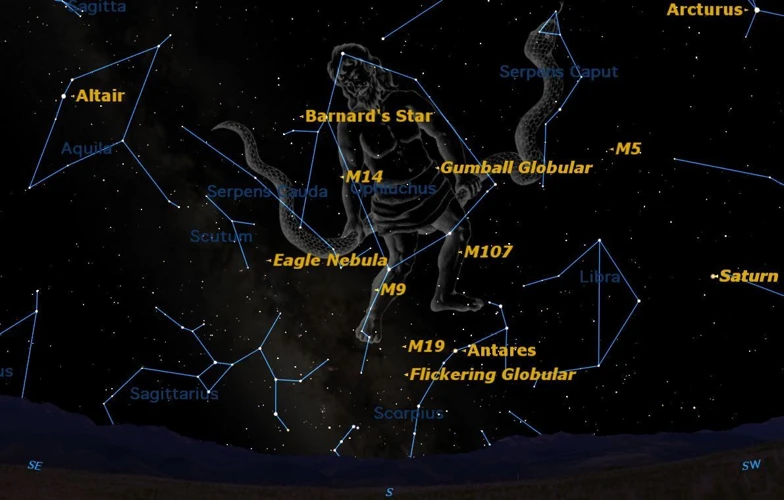
Among the captivating constellations of the zodiac, Sagittarius stands as a symbol of adventure and wisdom. The story of Sagittarius takes us back to ancient Greek mythology, where it is associated with the wise centaur known as Chiron. Chiron was unlike any other centaur, possessing immense knowledge and wisdom. He was a renowned teacher, mentoring many of the greatest heroes and gods, including Hercules and Jason. Chiron’s name became synonymous with wisdom and guidance. In recognition of his immense contributions, Zeus placed him among the stars as the constellation of Sagittarius. This celestial archer with a centaur’s body represents the duality of nature and the pursuit of knowledge. As we gaze upon the constellation of Sagittarius in the night sky, we are reminded of Chiron’s eternal presence, his wisdom encapsulated in the stars and his enduring influence on the world. To delve further into the connection between astrology and astronomy, you can explore the contrasting realms of astrology and astronomy and unravel the secrets of the cosmos.
The Archer and the Centaur: The Tale of Chiron
In the realm of Greek mythology, the story of “The Archer and the Centaur: The Tale of Chiron” unveils a captivating narrative associated with the zodiac constellation Sagittarius. At the heart of this myth lies Chiron, a wise and immortal centaur known for his exceptional knowledge and skill in the arts of healing and medicine. Chiron, revered for his wisdom and kind nature, mentored many heroes and demigods, including the renowned Hercules.
According to the myth, Chiron grew up on Mount Pelion and possessed both the characteristics of a man and a horse due to his unique lineage. He was recognized for his ability to navigate the celestial skies and was eventually honored as the constellation Sagittarius, also known as the Archer. In the night sky, we can observe Sagittarius as a figure of a centaur, half-man and half-horse, aiming a bow and arrow towards the heavens.
Chiron’s story takes an intriguing turn when he became accidentally wounded by a poisoned arrow, crafted by Hercules himself. Despite Chiron’s immortality, the wound caused him immense suffering as he was unable to heal it. This paradox led Chiron to seek a way to end his suffering, and ultimately, he struck a deal with the gods. Chiron, willing to surrender his immortality, was allowed to die and ascend to the heavens, taking his place among the stars as the constellation Sagittarius.
The myth of Chiron serves as a testament to the transformative power of sacrifice and the profound connection between the celestial realm and mortal existence. As we gaze upon the constellation Sagittarius, we are reminded of the wisdom and duality embodied by Chiron, the mythical centaur, forever immortalized in the night sky.
Story of Capricorn
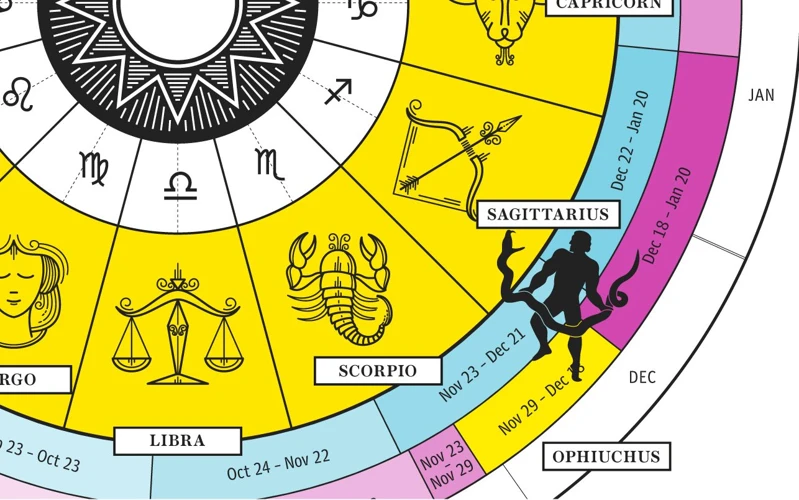
The mythical tale of Capricorn, the Sea Goat, takes us on a journey through the depths of the sea and the heights of the mountains. In ancient Greek mythology, Capricorn is closely associated with the story of Pricus, a wise and compassionate sea god. Pricus was a unique creature, with the body of a goat and the tail of a fish. He possessed the ability to manipulate time, granting him great wisdom and foresight. However, Pricus was tormented by the fact that his children, the sea goats, would eventually transform into fully aquatic creatures and leave him behind. Filled with sorrow, the compassionate Pricus pleaded with the gods to reverse time, allowing his children to remain by his side. Moved by his love and devotion, the gods transformed Pricus into a constellation, immortalizing his story in the night sky. This myth serves as a reminder of the complexities of life, the importance of family, and the enduring power of love. As we gaze upon the constellation of Capricorn, we are reminded of Pricus’ sacrifice and the eternal bond between a parent and his children.
The Sea Goat: The Story of Pricus
In the realm of mythology, the zodiac constellation Capricorn is known as “The Sea Goat.” This association is rooted in the fascinating tale of Pricus, a mythical creature that embodies the duality of both land and sea. Pricus was no ordinary creature; he possessed the body of a goat from the waist up and a fish tail from the waist down. According to the story, Pricus was not only an immortal being but also the father of a race of sea-goats just like himself.
The story goes that Pricus was burdened by the cyclical nature of time and yearned to break free from the constraints of destiny. He possessed the ability to manipulate time, and he used this power to ensure that his children, the sea-goats, would not age like ordinary creatures. However, Pricus soon realized the unintended consequences of his actions. As time moved forward, his beloved children became increasingly lonely as they watched their friends and loved ones age and eventually pass away.
Overwhelmed with sadness for his children, Pricus approached the gods and pleaded with them to reverse his manipulation of time. The gods, moved by his genuine compassion and love for his offspring, decided to grant his wish. But with the reversal of time, Pricus found himself unable to break free from the cyclical nature of the universe. He became the sole survivor of his race, alone in a world that had regressed back to a time before his children were born.
Heartbroken and filled with regret, Pricus beseeched the gods once more, this time asking for a transformation that would allow him to exist simultaneously in the realms of both land and sea. The gods granted his request, transforming Pricus into the constellation Capricorn, forever immortalizing his unique nature as “The Sea Goat” in the night sky.
The story of Pricus and his transformation into Capricorn serves as a reminder of the delicate balance between time, destiny, and the love and sacrifice of a father for his children. It speaks to our yearning to transcend the limitations imposed upon us and our desire to protect those we cherish. The constellation Capricorn, with its half-goat, half-fish form, continues to inspire awe and wonder, reminding us of the complexities of our existence and the mythical stories that shape our understanding of the universe.
Story of Aquarius
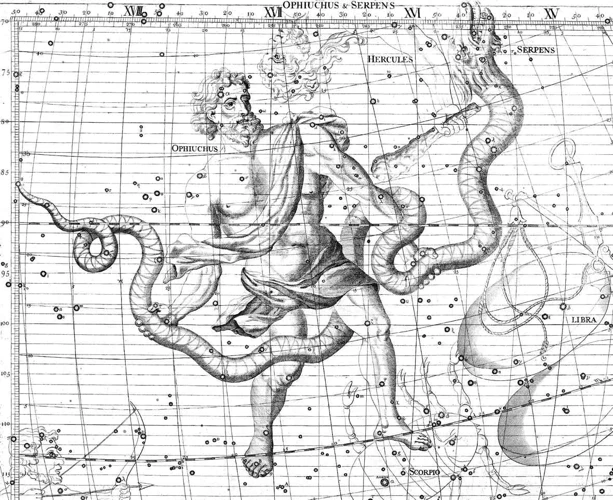
As we journey through the mystical realm of astrology and mythology, we encounter the captivating story of Aquarius, the Water Bearer of the Gods. Aquarius represents a figure pouring celestial waters from a vessel, symbolizing the renewal and abundance that water brings. In ancient Greek mythology, Aquarius is associated with the tale of Ganymede, a beautiful mortal youth whom the mighty Zeus was enchanted by. In his infatuation, Zeus transformed himself into an eagle and swept Ganymede away to Mount Olympus, where he became the cupbearer of the gods. This myth not only explains the origin of Aquarius but also symbolizes the divine gifts and wisdom that flow through the water-bearer. It serves as a reminder of the importance of nurturing and sharing knowledge for the betterment of humanity. The intertwining of myth and cosmos truly allows us to explore the depths of human imagination and our connection to the celestial realm. To further unravel the secrets and stories within the zodiac constellations, venture into the enchanting world of Ophiuchus or delve into the intriguing differences between astrology and astronomy.
Origin of Aquarius: The Water Bearer of the Gods
The origin of Aquarius is a fascinating myth that revolves around the concept of a celestial water bearer. In Greek mythology, Aquarius is associated with the figure of Ganymede, a young and handsome prince of Troy. According to the legend, Ganymede caught the eye of Zeus, the king of the gods, who was captivated by the prince’s beauty. Zeus decided to bring Ganymede to Mount Olympus to serve as the cupbearer of the gods, pouring their nectar and ambrosia. As a reward for his service, Zeus placed Ganymede among the stars as the constellation we now know as Aquarius.
The story of Ganymede and his transformation into Aquarius highlights the divine nature of this zodiac constellation. It symbolizes the eternal connection between humanity and the divine, as well as the importance of service and the rewards that can come from it. Aquarius, often depicted as a figure pouring water from a jug, represents the flow of knowledge, ideas, and enlightenment. It invites us to embrace innovation, humanitarianism, and our ability to bring positive change to the world.
This mythological tale reinforces the significance of Aquarius as a symbol of progress and forward-thinking. It reminds us of the power of imagination, as exemplified by Ganymede being plucked from obscurity to join the gods on Mount Olympus. The story of Aquarius serves as a reminder that we have the potential to rise above limitations and contribute something meaningful to society, just as Ganymede’s role as the water bearer brought sustenance and vitality to the gods.
As we gaze upon the constellation of Aquarius in the night sky, we are reminded of the transformative power of water and the enduring legacy of ancient myths. The story of Ganymede and the celestial water bearer serves as a testament to the rich tapestry of human imagination, connecting us to a time when the gods and mortals were intricately intertwined. So, let the legend of Aquarius inspire us to embrace our own unique potential and make a positive impact in the world.
Story of Pisces
Diving into the depths of Pisces, the twelfth and final sign of the zodiac, we uncover a beautiful mythic tale that revolves around the goddess Aphrodite and her son Eros. In Greek mythology, Aphrodite and Eros found themselves faced with danger and sought refuge in the form of two fish. The constellation of Pisces represents these fish, forever immortalized in the night sky. According to the myth, Aphrodite and Eros transformed into fish and swam to safety in the Euphrates River, escaping the ferocious Typhon, a monstrous creature. This story serves as a testament to the power of love and the lengths one will go to protect it. Symbolizing compassion, empathy, and deep emotions, Pisces embodies the ethereal nature of water and the ability to connect on a profound level. The story of Aphrodite and Eros as the fishes of Venus reminds us of the transformative and transcendent nature of love. Explore more captivating stories and intriguing relationships between astrology and astronomy in the vast realm of the zodiac constellations.
The Fishes of Venus: The Myth of Aphrodite and Eros
In the realm of Greek mythology, the captivating tale of “The Fishes of Venus: The Myth of Aphrodite and Eros” takes center stage. Aphrodite, the goddess of love and beauty, plays a prominent role in this enchanting myth. According to the legend, Aphrodite and her son Eros, the god of love, were fleeing from the fearsome monster Typhon. Desperately seeking refuge, they dove into the Euphrates River, transforming themselves into a pair of shimmering fish.
In this incredible metamorphosis, Aphrodite and Eros became known as the “Fishes of Venus,” representing love and harmony. Their fluidity and grace through the waters of the river served as a symbol of their eternal bond and the power of love. Their presence in the night sky as the constellation Pisces speaks volumes about the enduring nature of love and its celestial influence.
The myth of Aphrodite and Eros reflects the profound connection between love and the cosmos, reminding us that love transcends earthly boundaries and holds a divine essence. It reminds us of the ethereal and transformative qualities of love, as well as its ability to bring people together in profound and meaningful ways.
As we gaze upon the constellation Pisces, we are reminded of this timeless myth and the eternal significance of love in our lives. Its placement among the zodiac constellations serves as a constant reminder of the power and beauty of love, which has captivated hearts throughout history. The myth of the Fishes of Venus is just one example of the rich tapestry of stories associated with the zodiac constellations, highlighting the deep connection between mythology, the stars, and the human experience.
Conclusion
As we journeyed through the mythological stories associated with the zodiac constellations, we discovered a realm where celestial bodies intertwine with captivating tales of gods, heroes, and mystical creatures. These ancient narratives provide us with a unique glimpse into the human fascination with the stars and our quest to understand their influence on our lives. From the heroic quest for the Golden Fleece in Aries, to the divine twins Castor and Pollux in Gemini, and the magnificent Nemean Lion in Leo, each zodiac constellation tells a story that resonates across time and cultures. These tales spark our imagination, invite us to ponder the mysteries of the universe, and connect us to the rich tapestry of human history. Through the lens of astrology and astronomy, we explore vast cosmic wonders and gain insights into our own existence. Whether we choose to perceive the zodiac constellations as symbolic representations or celestial guides, they continue to inspire awe and wonder in our modern world. So, let us gaze up at the night sky, where the myth and majesty of the zodiac constellations continue to captivate us, inviting us to dream, imagine, and seek our own stories amidst the stars.
Frequently Asked Questions
What is the significance of zodiac constellations?
Zodiac constellations hold significance in various cultural and astrological systems. They are believed to represent specific traits, characteristics, and influences on individuals based on their birth date in relation to the position of these constellations.
Are the zodiac constellations the same in every culture?
No, different cultures have their unique interpretations of the zodiac constellations. While some constellations overlap, many cultures have their own set of mythological stories and symbols associated with the zodiac.
Is astrology connected to the zodiac constellations?
Astrology is closely connected to the zodiac constellations as it uses their positions to make predictions and interpretations about personality traits, compatibility, and life events.
How old are the mythological stories associated with the zodiac constellations?
The mythological stories associated with the zodiac constellations are ancient, dating back thousands of years. They have been passed down through generations, evolving and adapting in different cultures.
What is the story behind Taurus and Zeus?
The story of Taurus involves Zeus, the King of the Gods, taking the form of a bull to abduct Europa, a Phoenician princess. This mythological tale depicts the strength and romantic escapades of Zeus.
Who were Castor and Pollux?
Castor and Pollux were the divine twins of Greek mythology. They were the sons of Zeus and were renowned for their bravery and brotherly bond. The story of Gemini revolves around their mythical adventures.
What is the connection between Cancer and Hercules?
Hercules, as part of his twelve labors, fought and captured the Zodiakian crab, which is associated with the constellation of Cancer. This feat showcases Hercules’ strength and bravery.
What is the story of Persephone and Virgo?
The story of Virgo is intertwined with the tale of Persephone, the daughter of Demeter, the goddess of harvest. Persephone’s abduction by Hades and her eventual return to Earth are central to the mythological significance of Virgo.
Who was Astraea and how is she connected to Libra?
Astraea was the Greek goddess of justice and innocence. She is associated with the Golden Age, a period of peace and harmony in Greek mythology. Libra, symbolizing the scales of justice, represents Astraea’s pursuit of righteousness.
How is Scorpio linked to the hunter Orion?
The story of Scorpio is intertwined with Orion, a mighty hunter of Greek mythology. Orion encountered a scorpion sent by Gaia to challenge his strength, resulting in a legendary battle that led to their placement among the zodiac constellations.








